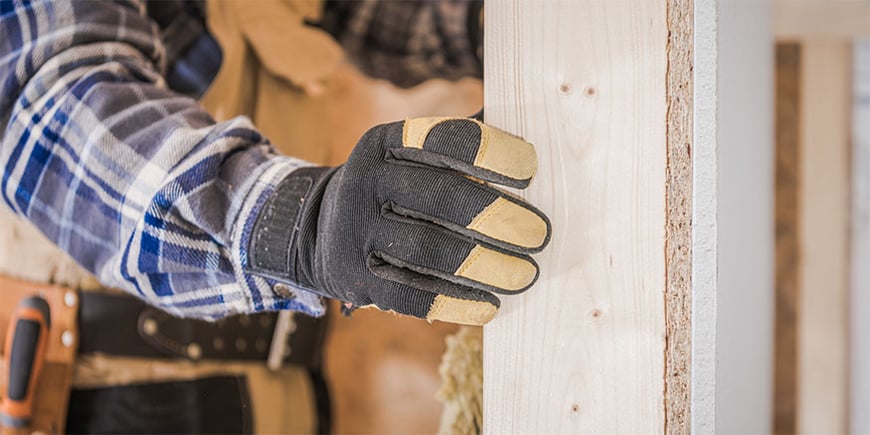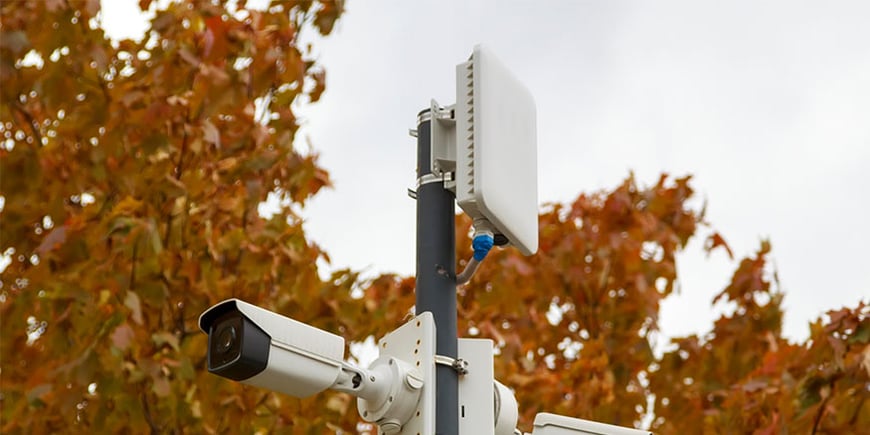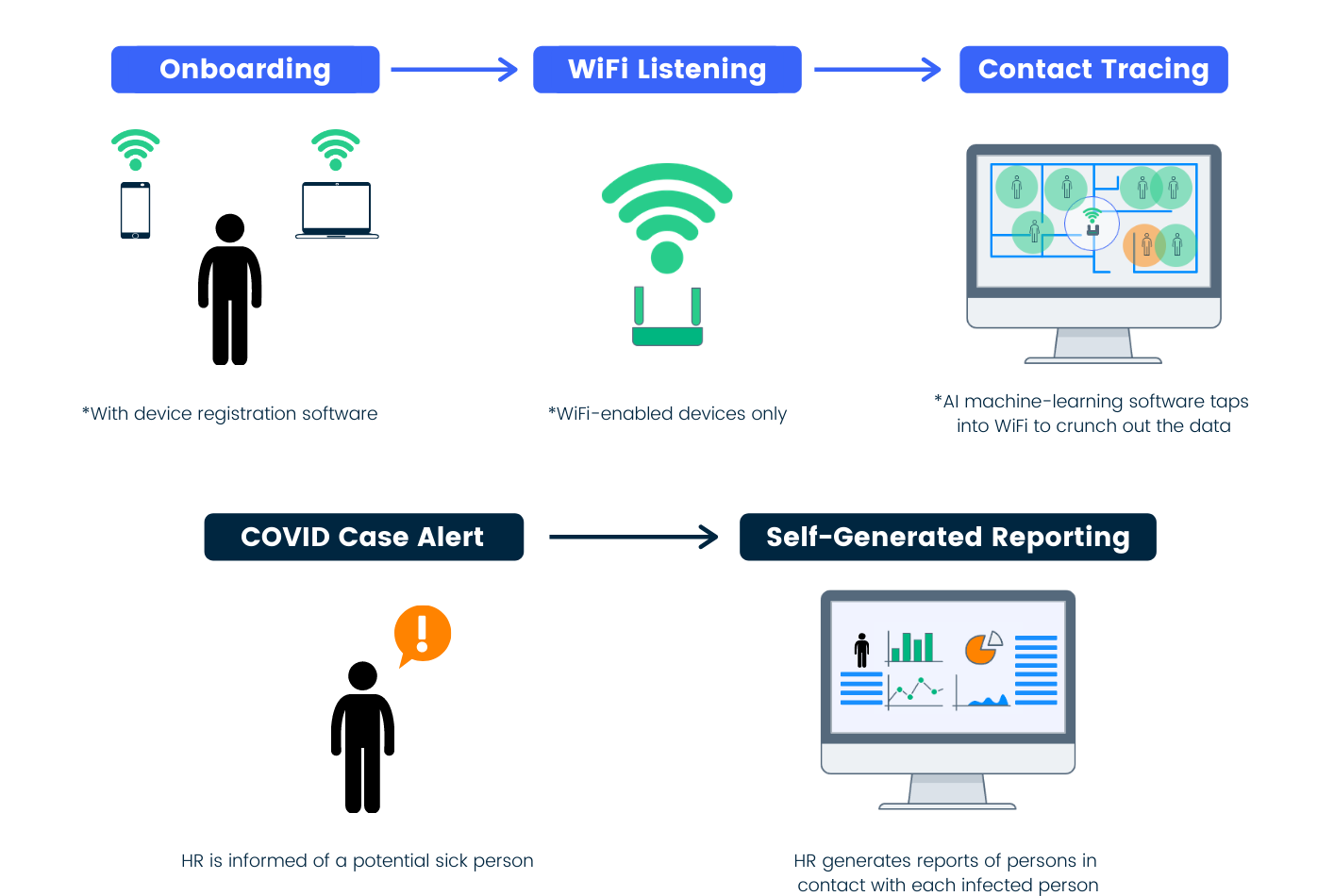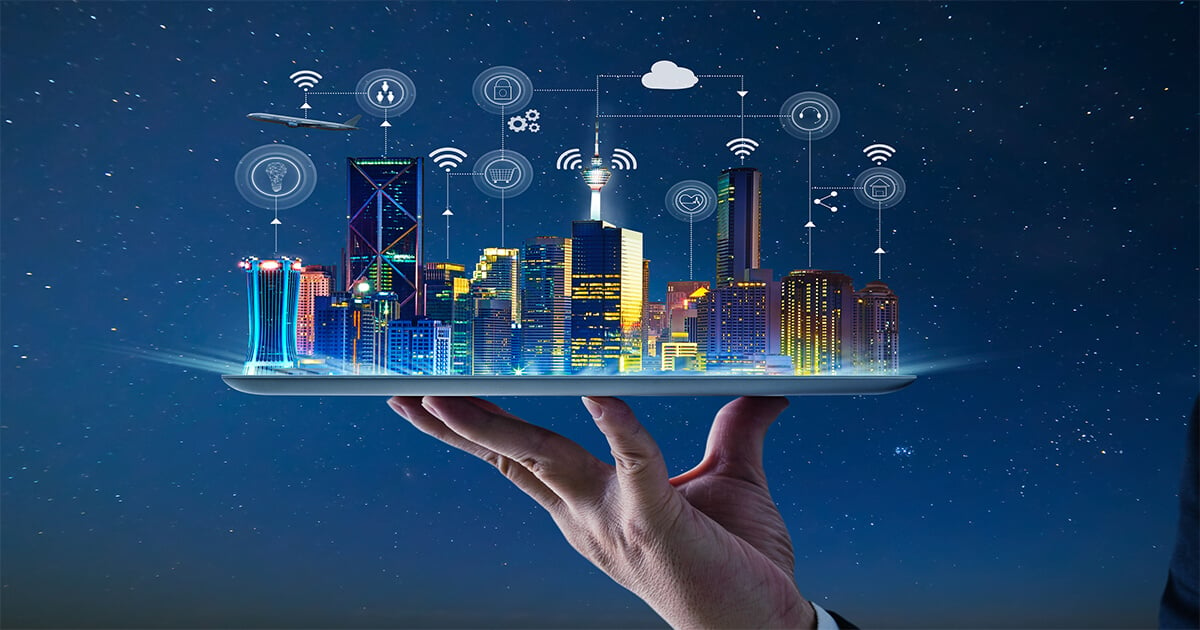There are three common safety measures that businesses are taking: reconfiguring indoor spaces, getting outdoor WiFi, and implementing contact tracing. All of them involve your WiFi network in some capacity and it's important to understand how in order to keep everyone safe.
With everyone trying to navigate Covid-19 and ensure the well-being of their employees and guests by minimizing the spread and avoiding an outbreak, you can't afford to get anything wrong.
In this article, you'll learn what to consider when implementing these 3 safety measures for corona virus safety.
1. Reconfiguring & Renovating Indoor Spaces
Many offices are currently adding new walls, tearing down existing walls, or partitioning up spaces in order to better enable social distancing measures.
However, as we reconfigure our spaces and other common areas, we're also changing how the WiFi signal moves throughout these spaces, which has the potential to create some unwanted performance issues.
 Capacity vs. Materials
Capacity vs. Materials
Common sense practices would say: “Hey, if I have less employees in workspace at a given time, I don’t need to reconfigure my network or add any more access points. I don’t need to worry about my WiFi right now.”
Yes, the client density may drop, however, it may not be the right mindset to have if you’re partitioning up spaces, which causes attenuation (reduction of the signal) and ultimately deadens (or suppresses) the signal. So putting up a barrier—even if it's only separating two people—will degrade an otherwise strong WiFi signal.
In one case, we were called in to help fix a performance issue of a private university. We found that aluminum was in the walls that they were using to separate the space and aluminum reflects the WiFi signal. In this case you would need a dedicated AP in each space, no matter the capacity.
Trivia time - Does Plexiglas affect my WiFi? Yes, even Plexiglass can mess with your WiFi signal. A graduate student at USC prepared an analysis of WiFi propagation through common materials, including Plexiglas, and it looks like there is a slight signal loss. It's less than a wall, but if you have a ton of Plexiglas in place as sneeze guards, it can add up to a lot of lag time at work.
Keeping the Team Involved
Here's another thing to consider when adding walls (or partitioning space): Keeping your IT team involved in renovations.
You’d be shocked by the amount of network equipment that goes missing during these times of renovation. We sometimes hear stories of construction workers adding a wall and ends up moving the AP somewhere in the wall or ceiling and the IT team is left having no idea where their equipment went!
We make jokes about it, but this creates a lot of chaos for the IT team and negatively affects the WiFi connection for students.
When managing a large project, communication is key and even the most unlikely of players in a project (like IT in construction) are vitally important.
Even our team of network engineers usually have to take a look at both the before AND after floor plans, along with previous surveys to see how the RF was working to better measure the coverage change.
“What worked previously may not work this now because of how much things have changed,” – Michael McNamee, VP Engineering
The good thing is that most assessments of this kind can be done using a predictive site survey, meaning that a network engineer doesn’t need to be onsite in order to evaluate and give you the recommendation for better coverage of a renovated office space.
So no matter how you decided to reconfigure your office and common area spaces, considerations need to made in order to make sure that your WiFi continues to perform optimally.
If you're currently experiencing any WiFi problems after a renovation, we can help. SecurEdge offers a free quote tool for WiFi services.

2. Outdoor WiFi
Another way we’ve seen businesses navigate social distancing measures is by offering outdoor WiFi for the workplace. Not too shabby of an idea considering fresh air and nature helps spark creativity (as long as weather conditions allow).
Since employees still need their laptops and various other devices to connect to the WiFi outdoors, we need to plan for the WiFi coverage in these spaces too.
Here’s the challenge though—outdoor WiFi behaves vastly different than what we’re used to seeing indoors.
Note* - Outdoor WiFi uses different equipment specifically designed for outdoor environments. This means you can't take an indoor AP and place it outside; it also means there are different prices to consider when planning your project budget.
With indoor WiFi, there’s a lot of reflective surfaces that allow for the signal to bounce (i.e., glass, walls. ceilings, floor, furniture, and fixtures) within that contained space. With outdoor WiFi there’s more absorptive materials (i.e., ground, foliage) because it’s organic matter, so typically the signal can get lost in the ether.
Getting WiFi outdoors is usually just a compliment to indoor, like an amenity of sorts, but due to the pandemic, a lot of conversations are about moving more things outdoors.
“We’ve had more outdoor WiFi conversations in the last two weeks than we’ve had in the last two years!” – Michael McNamee, VP Engineering
What about Outdoor Mesh WiFi?
Outdoor Mesh WiFi is a wireless backhaul solution, meaning it gets data to the backbone of the network. Mesh gives you the ability to boost and extend your coverage throughout an outdoor area. Since there are no costly cabling involved, it can help reduce the total investment cost. However, it is considered a compromise because the radios are using the exact same channels that they're using to also provide access to clients—cutting your bandwidth in half!
Mesh has gotten a lot of attention because of it's cost-effectiveness compared to a wired network. Which is great if you're offering outdoor WiFi to a few guests passing through the promenade. However, if you're trying to support business WiFi outdoors, getting reliable connectivity for all your employees will be much harder.
That's why we always recommend cabling your network outdoors.
Wiring outdoors can be less aesthetically pleasing for a short period of time (with trenching), but in return, you'd get long term—and more reliable—connectivity.
3. WiFi-Based Contact Tracing
If you’re part of the team that is in charge of contact tracing Covid-19 cases, you’re probably now considering technology to help in that process.
WiFi-based contact tracing combines WiFi data and AI machine-learning software to give you a report of everyone that has come into contact with a Covid positive person.
It works like this:

A contact tracing solution can also provide some insight into areas of high utilization that may need better focused sanitization, and areas where social distancing measures may not be adhered to.
Your business WiFi can contact trace and give you the ability to turn old-fashion detective work into more effective AI-generated reporting. Consequently, saving your business thousands of dollars in labor by leveraging the technology investments that you may already have made.
However, trying to implement outdoor contact tracing can get a bit tricky since you won’t have the granularity that you would typically have with indoor spaces.
If outdoor contact tracing is something that you're wanting to implement, Bluetooth-based contact tracing is a more reliable option.
Final Thoughts
While there are a lot of safety concerns to consider as an immediate response, we need to also consider the long-term strategy. How will businesses create a post-pandemic work experience that's not only safe, but also ready to meet the growing expectations and technology demand in the office?
We will need to consider upgrading our systems with more capable hardware—but more importantly—more capable software and business intelligence, for example, using presence analytics and real-time performance monitoring.
We'll also need greater flexibility when it comes to the purchasing and deployment of our networks. This will be critical for scalability and profitability.
How are you going to position your place of work in a post-pandemic environment? Will you be reactionary or will you be proactive?
If you have any questions or comments about your safety measures, leave them in the comments section below or connect with us on LinkedIn to keep the conversation going.





